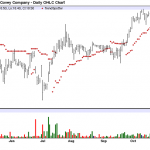On February 2, Merck (MRK) reported fourth-quarter results that met analyst forecasts on earnings, but missed on revenue. However, the miss was only by a slight amount.
All things considered, the company performed well. Over the past year, Merck has dealt with the strong U.S. dollar, a number of difficult patent expirations, and regulatory scrutiny over drug pricing.
The health care sector is filled with strong dividend stocks. Many of Merck’s peers, including Johnson & Johnson (JNJ) and Abbott Laboratories (ABT), are Dividend Achievers, a group of companies with 10+ consecutive years of dividend increases.
Merck is not yet a Dividend Achiever, as it held its dividend steady from 2004-2011. But the good news is, the company resumed dividend growth in 2011.
It increased its dividend again in 2016, and with a few more years of dividend increases, Merck will join the Dividend Achievers list.
This article will discuss Merck’s fourth-quarter and 2016 performance, as well as its outlook for 2017.
Financial Results Overview
Merck is a global pharmaceutical company. It operates in the following segments:
The pharmaceutical business is by far Merck’s most important segment. Within pharmaceuticals, the company’s products treat a number of therapeutic areas, including cardiovascular, diabetes, women’s health, oncology, vaccines and more.
The pharmaceutical business generated 1% revenue growth in 2016, led by oncology drug Keytruda. Revenue from Keytruda soared 148% in 2016.
Revenue from the drug soared last year, and Keytruda is now a $1.4 billion drug by annual revenue.
Keytruda is the foundation of Merck’s oncology strategy.

Source: Investor Update Presentation, page 4
Overall, fourth-quarter revenue declined 0.9% to $10.12 billion. This slightly missed analyst expectations, but only by about $100 million.

















Leave A Comment